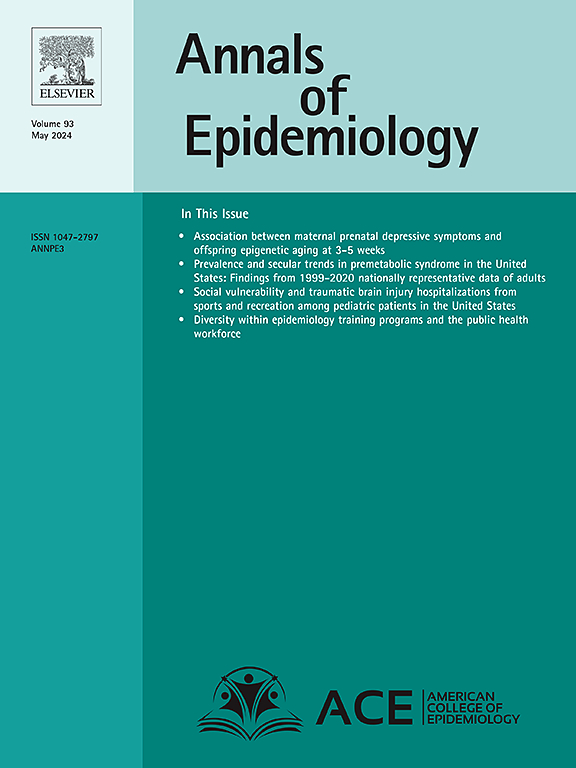糖尿病精准医学研究中全球不公平现象的大型语言模型分析
IF 3
3区 医学
Q1 PUBLIC, ENVIRONMENTAL & OCCUPATIONAL HEALTH
引用次数: 0
摘要
虽然近80% %的糖尿病患者生活在低收入和中等收入国家,但目前尚不清楚精准医学研究中有多少比例是基于这些人群的。手工筛选文献既费时又耗费资源。我们的目标是使用一个可扩展的大型语言模型(LLM)支持的工作流程来表征十个地理区域的糖尿病负担和精准医学研究的比例性。方法电子检索PubMed 2010 - 2023年糖尿病精准医学相关研究的标题和摘要(n = 129,154)。两名审稿人独立地标记了一个随机子样本,并对其来源人群进行了分类,以及这些研究是否属于糖尿病精准医学的初步研究。使用这些标记数据(n = 2196),我们为gpt - 40开发了提示符并选择了超参数。然后,我们使用gpt - 40对剩余的研究进行分类,并估计研究产出与2021年全球疾病负担(GBD)研究中残疾调整生命年(DALY)的比例。结果在15507项被确定为糖尿病精准医学的研究中,分别有33.8% %、20.9% %和14.3% %来自北美、西欧和东亚。研究数量与疾病负担的比例最大的是北美(0.95 / 1000 DALYs)和西欧(0.78 / 1000 DALYs),最小的是东南亚、南亚和撒哈拉以南非洲(0.02 / 1000 DALYs)。未来对基于组学的研究的投资应优先考虑西欧和北美以外的地区,以实现糖尿病护理的全球公平。本文章由计算机程序翻译,如有差异,请以英文原文为准。
A large language model analysis of global inequities in precision medicine research on diabetes
Purpose
Although nearly 80 % of patients with diabetes live in low- and middle-income countries, it is currently unknown what proportion of precision medicine research is based on these populations. Manual screening of literature is time consuming and resource intensive. Our objective is to characterize the proportionality of diabetes burden and precision medicine research across ten geographic regions using a scalable large language model (LLM) enabled workflow.
Methods
An electronic search of PubMed identified titles and abstracts of studies related to precision medicine in diabetes from 2010 to 2023 (n = 129,154). Two reviewers independently labelled a random sub-sample and classified their source populations, and whether these were primary studies of precision medicine in diabetes. Using this labeled data (n = 2196), we developed prompts and selected hyperparameters for GPT-4o. We then used GPT-4o to classify the remaining studies and estimated the ratio of research output to disability adjusted life years [DALY] from the Global Burden of Disease [GBD] study 2021.
Results
Of the 15,507 studies identified as precision medicine in diabetes, 33.8 %, 20.9 % and 14.3 % were from North America, Western Europe, and East Asia respectively. The number of studies was the most proportionate to disease burden for North America (0.95 per 1000 DALYs) and Western Europe (0.78 per 1000 DALYs), and the least proportionate for Southeast Asia, South Asia, and Sub-Saharan Africa (0.02 each per 1000 DALYs).
Conclusions
Future research investments into omics-based research should prioritize regions outside Western Europe and North America for achieving global equity in diabetes care.
求助全文
通过发布文献求助,成功后即可免费获取论文全文。
去求助
来源期刊

Annals of Epidemiology
医学-公共卫生、环境卫生与职业卫生
CiteScore
7.40
自引率
1.80%
发文量
207
审稿时长
59 days
期刊介绍:
The journal emphasizes the application of epidemiologic methods to issues that affect the distribution and determinants of human illness in diverse contexts. Its primary focus is on chronic and acute conditions of diverse etiologies and of major importance to clinical medicine, public health, and health care delivery.
 求助内容:
求助内容: 应助结果提醒方式:
应助结果提醒方式:


